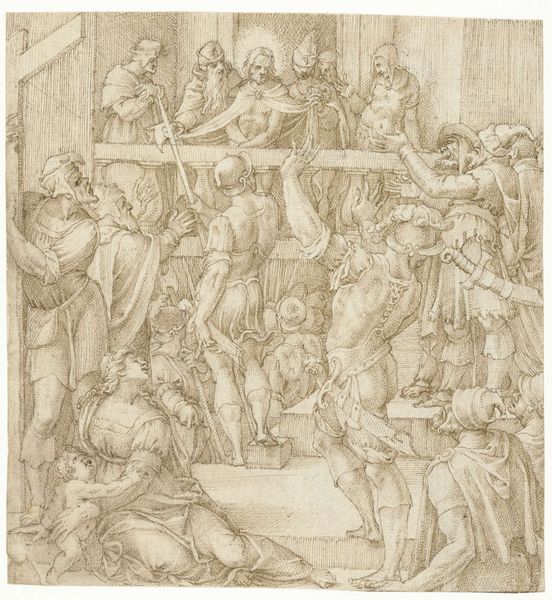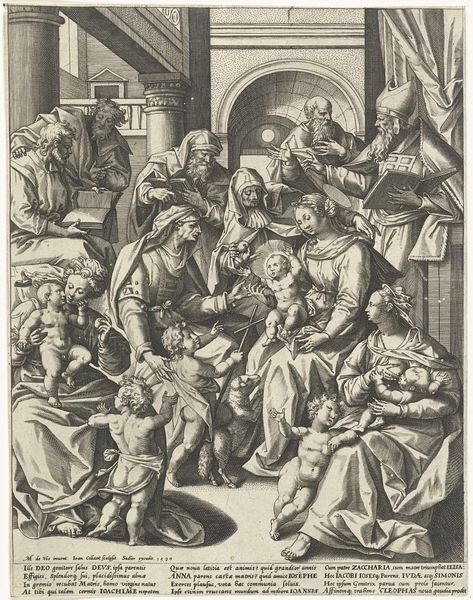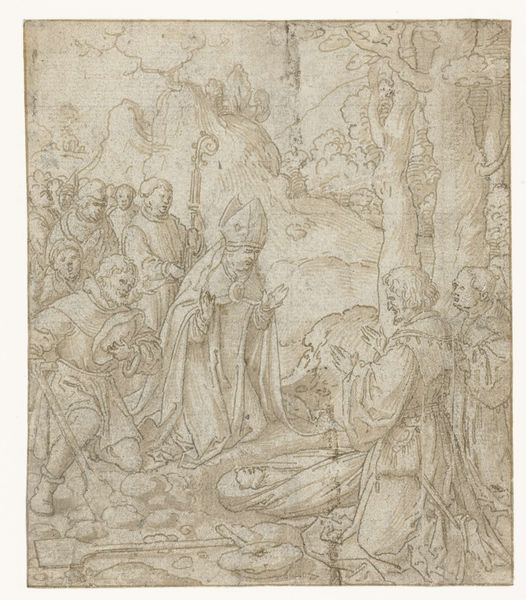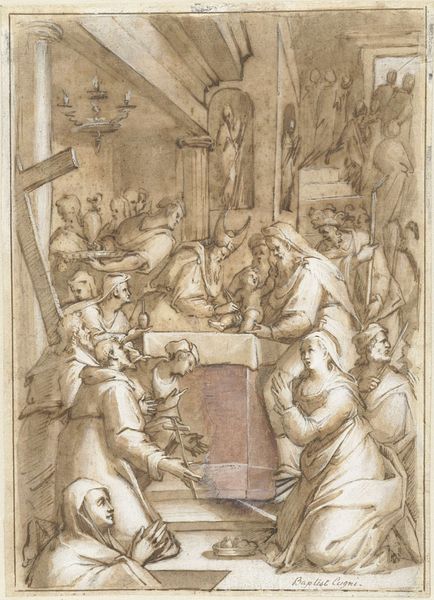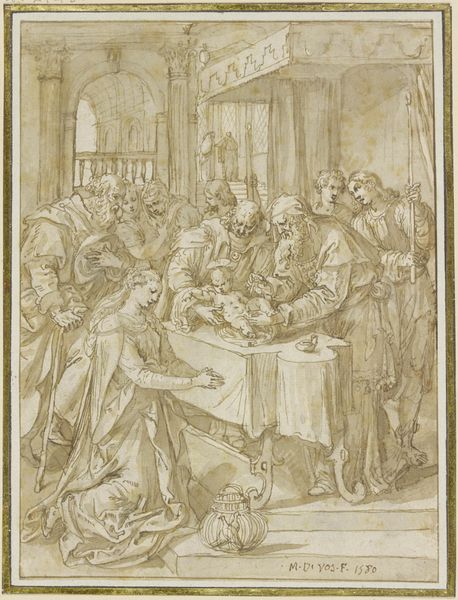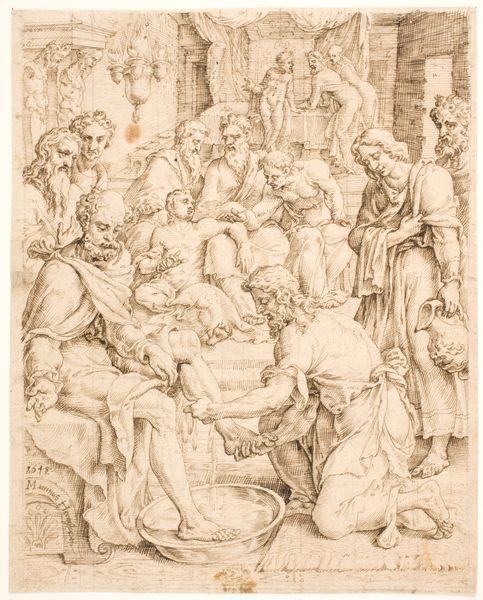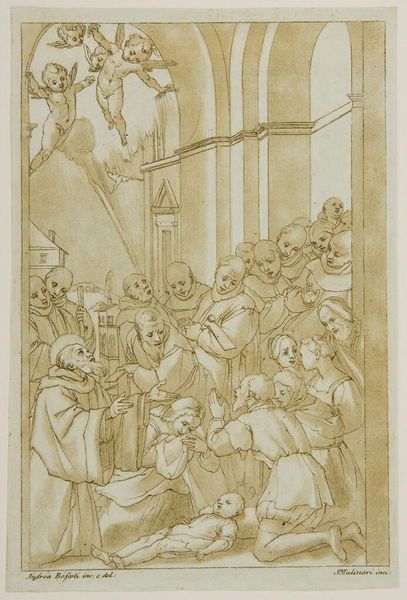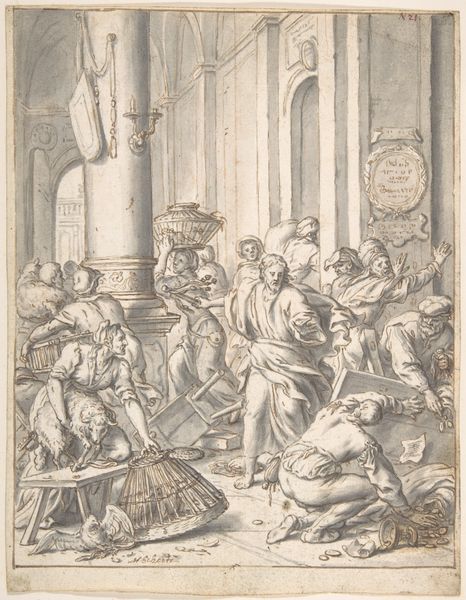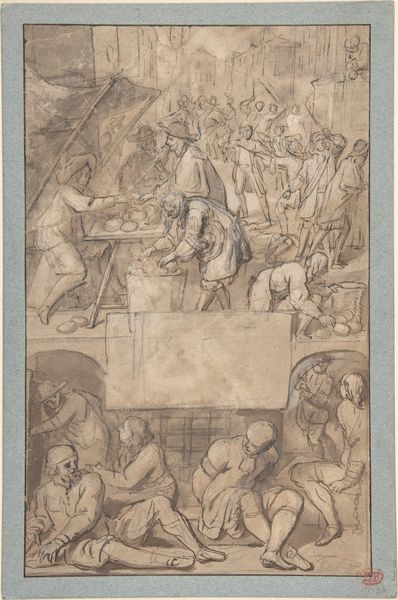
drawing, paper, charcoal
#
drawing
#
pencil sketch
#
charcoal drawing
#
figuration
#
paper
#
11_renaissance
#
charcoal
#
history-painting
#
academic-art
#
italian-renaissance
Dimensions: height 556 mm, width 414 mm
Copyright: Rijks Museum: Open Domain
Curator: Right, let’s look at this intriguing piece, "Christ in the House of Simon the Pharisee" created around 1544 by Giorgio Vasari. It’s a charcoal drawing on paper, and what strikes me most is the sheer energy emanating from a scene we might typically imagine as serene. Editor: Serene? Not at all! My initial reaction is drama. The artist masterfully used charcoal to give it an ethereal glow that clashes delightfully with the chaotic assembly of bodies. And I notice a foot washing–there is nothing more symbolic than a foot being cleaned; like baptism! I’m thinking repentance, transformation, cleansing. Curator: Oh, I agree about the underlying sense of spectacle, I’d add intrigue too. The dynamism is created through the almost restless rendering of the figures, you can sense this is probably a preparatory sketch, the energy of which might be absent in the completed, so to say perfect, painting. Editor: Perfectly said. As a study, its immediacy leaps out! There’s an unpolished emotional transparency here, wouldn’t you agree? I would argue, it provides us a window into Vasari's initial impulses—a glimpse of his soul, if I may indulge in romantic flourish? The very fact that he uses chiaroscuro adds to the mystical symbolism in the image itself. Look at those shadowy outlines of people, looming...almost menacing! Curator: Oh yes! Shadows hold tales of half-seen meanings, I do love it. Speaking of meaning, there’s so much depth to be found in what feels, superficially, like a fleeting composition. Vasari captured a moment teeming with profound theological weight – human frailties clashing with the divine. It’s heavy...yet elegant! I would see that reflected in his heavy but also swift gestures across the page, just as elegant. Editor: Absolutely. Seeing it now in the Rijksmuseum we might lose track of the social dynamics and implications the theme may hold—like, imagine being at the top of the religious chain in those times, only to be challenged by the symbolic arrival and actions by this Messiah… This drawing keeps me pondering our history and the enduring power of visual symbols that cross centuries to speak with us now, centuries later. Curator: Indeed. This charcoal rendering of Vasari makes you dive right into that crucial juncture. Each hasty stroke feels deliberate, imbuing his "Christ in the House of Simon the Pharisee" with palpable tension. Editor: And this tension is exactly what speaks to me. That balance of shadows looming across bodies is very strong. It almost transforms what would be, otherwise, a calm setting into an everlasting moment of unease!
Comments
rijksmuseum about 2 years ago
⋮
This detailed drawing on blue paper is a study for a mural in a refectory, the dining room of a monastery. Many of its figures are derived from Vasari’s own compositions or those of his contemporaries. They entirely fill the small loggia with its fantastical twisted columns. This horror-vacui, or fear of empty space, was a typical feature of Mannerism, the art movement to which Vasari belonged.
Join the conversation
Join millions of artists and users on Artera today and experience the ultimate creative platform.
